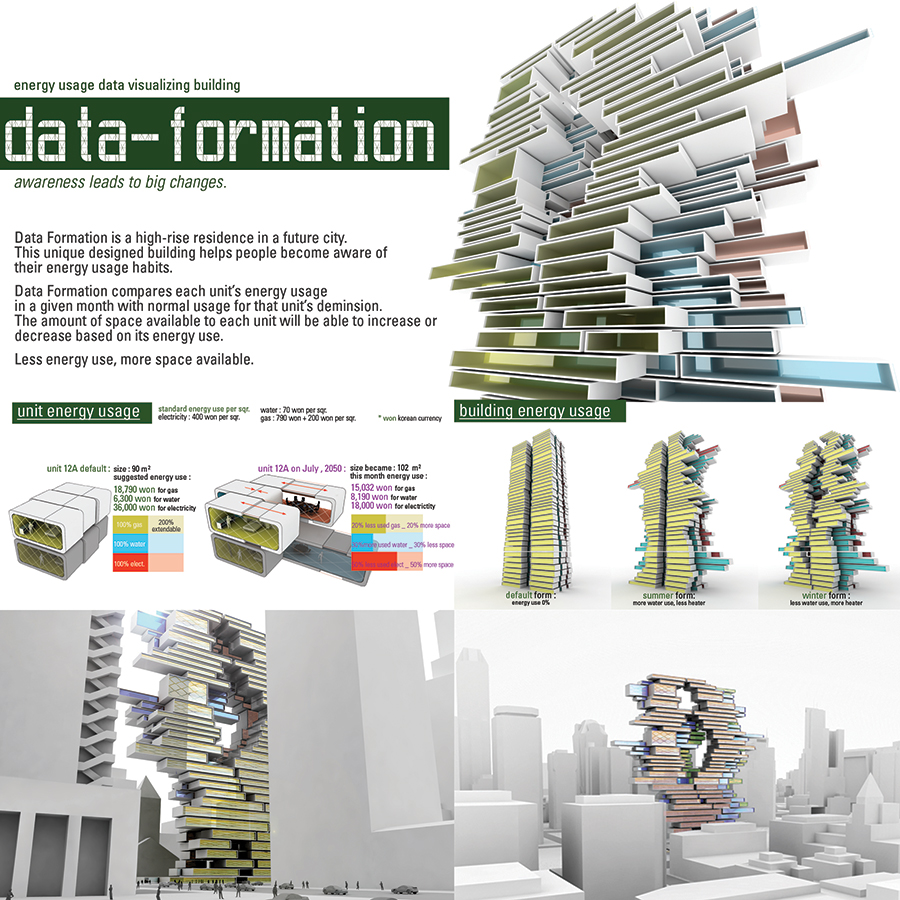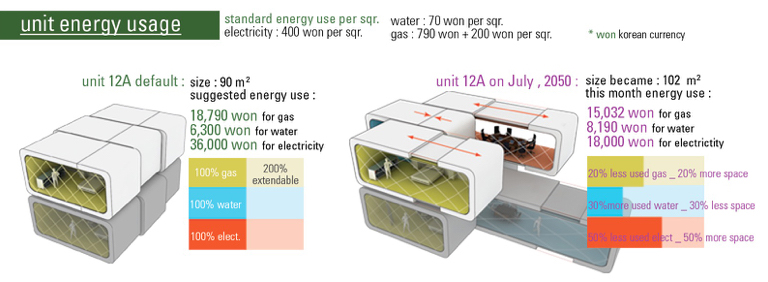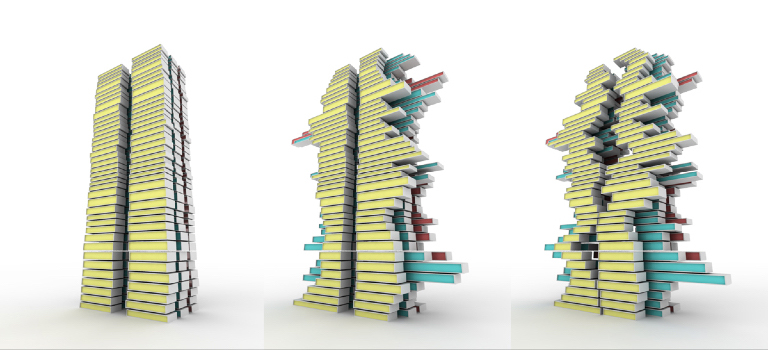|
_ _ _ _ _ _ _ _ _ _ _ _ _ _ _ _ _ _ _ __ _ __ _ _ _ _ _ _ _ __ __ _ _ _ _ __ _ _ _ _ _ _ _ _ _ _ _ _ _ _ _ _ _ _ _ _ _ _ _ _ _ _ __ _ __ _ _ _ _ _ _ _ __ __ _ _ _ _ __ _ _ _ _ _ _ _ _ _ _ _ _ _ _ _ _ _ _ _ _ _ _ _ _ _ _ __ _ __ _ _ _ _ _ _ _ __ __ _ _ _ _ __ _ _ _ _ _ _ _ _ _ _ _ _ _ _ _ _ _ _ _ _ _ _ _ _ _ _ __ _ __ _ _ _ _ _ _ _ __ __ _ _ _ _ __ _ _ _ _ _ _ _ _ _ _ _ _ _ _ _ _ _ _ _ _ _ _ _ _ _ _ __ _ __ _ _ _ _ _ _ _ __ __ _ _ _ _ __ _ _ _ _ _ _ _ |
| Data Formation |
|
The use of visuals can be a very strong form of communication. Having said that, what if we applied data to a physical space? If data is used to determine physical space, would that be an effective way to make people more aware of their habits? 
"Data formation" is a future high-rise residence building that changes its physical form based on the home’s energy usage. The size of the residence is in accordance with the amount of energy used. If the residents were to waste more energy than normal, the apartment would decrease in size. If they were to conserve energy, the size would increase. This is a conceptual building that might lead to behavioral changes through virtual changes in the size and shape of the apartments. If we are affected by the data we generate, we might have a stronger motivation to change our behavior in positive ways. 
This picture shows how each unit changes. The picture on the left shows what it would look like if no energy has been used. It is 90 square meters. After a month, if the residents use gas, water, or electricity, the size would increase to 102 square meters. This energy usage data goes directly to the place of where it was produced. 
The entire building could be reshaped like this. The left side is more of a straightforward shape, which means no energy has been used. As people start to use it, the shape could change in this way. It would be different every month and every season. Therefore, the residents and the public could easily notice their energy usage by the size of the unit, and by the shape of the building. We are dealing with energy used on a daily basis, so it is a very direct way to apply the data back to the original source from which it was produced. collaboration with : AnL studio award : iida (Incheon International Design Award), 2009 |